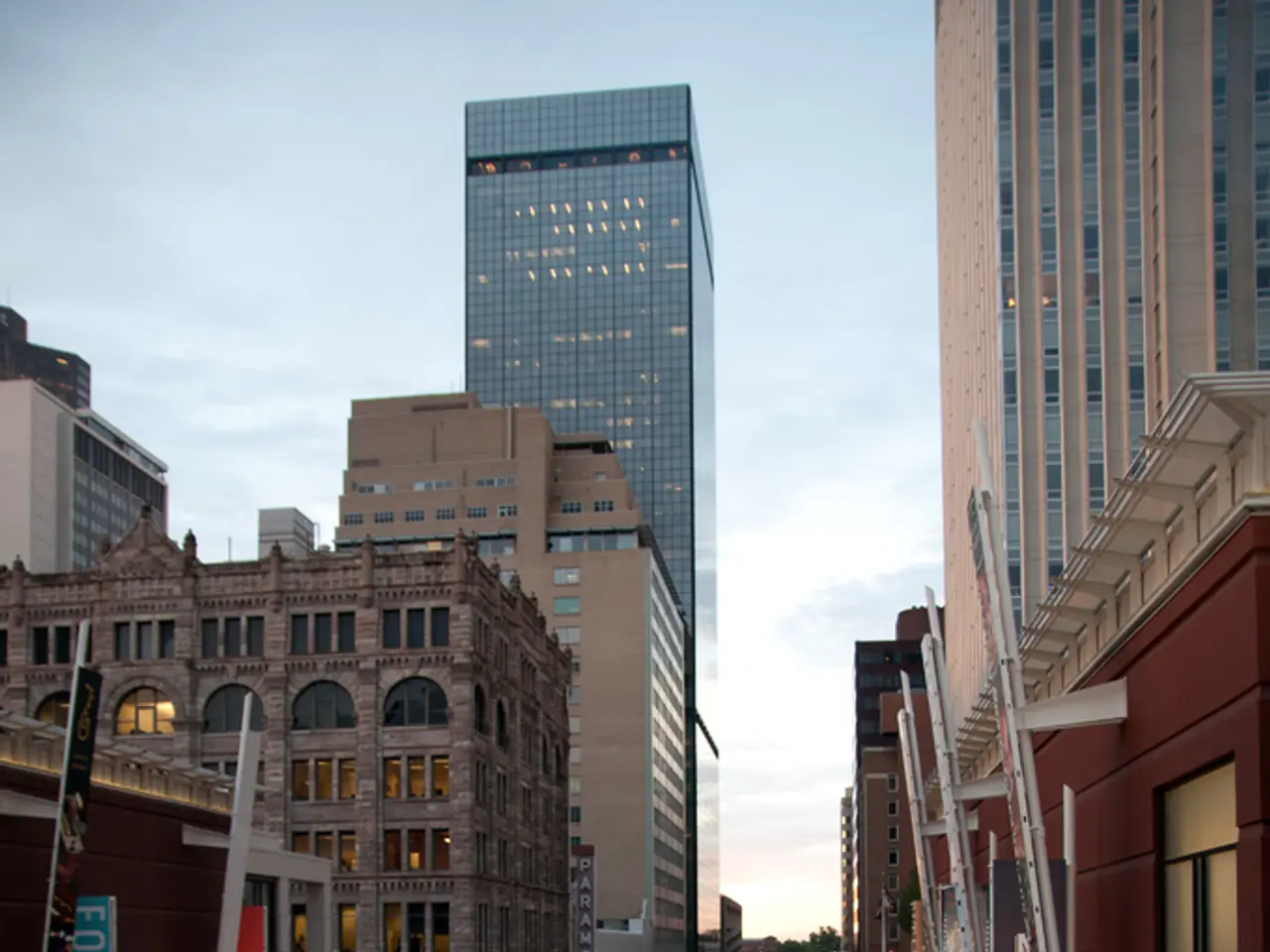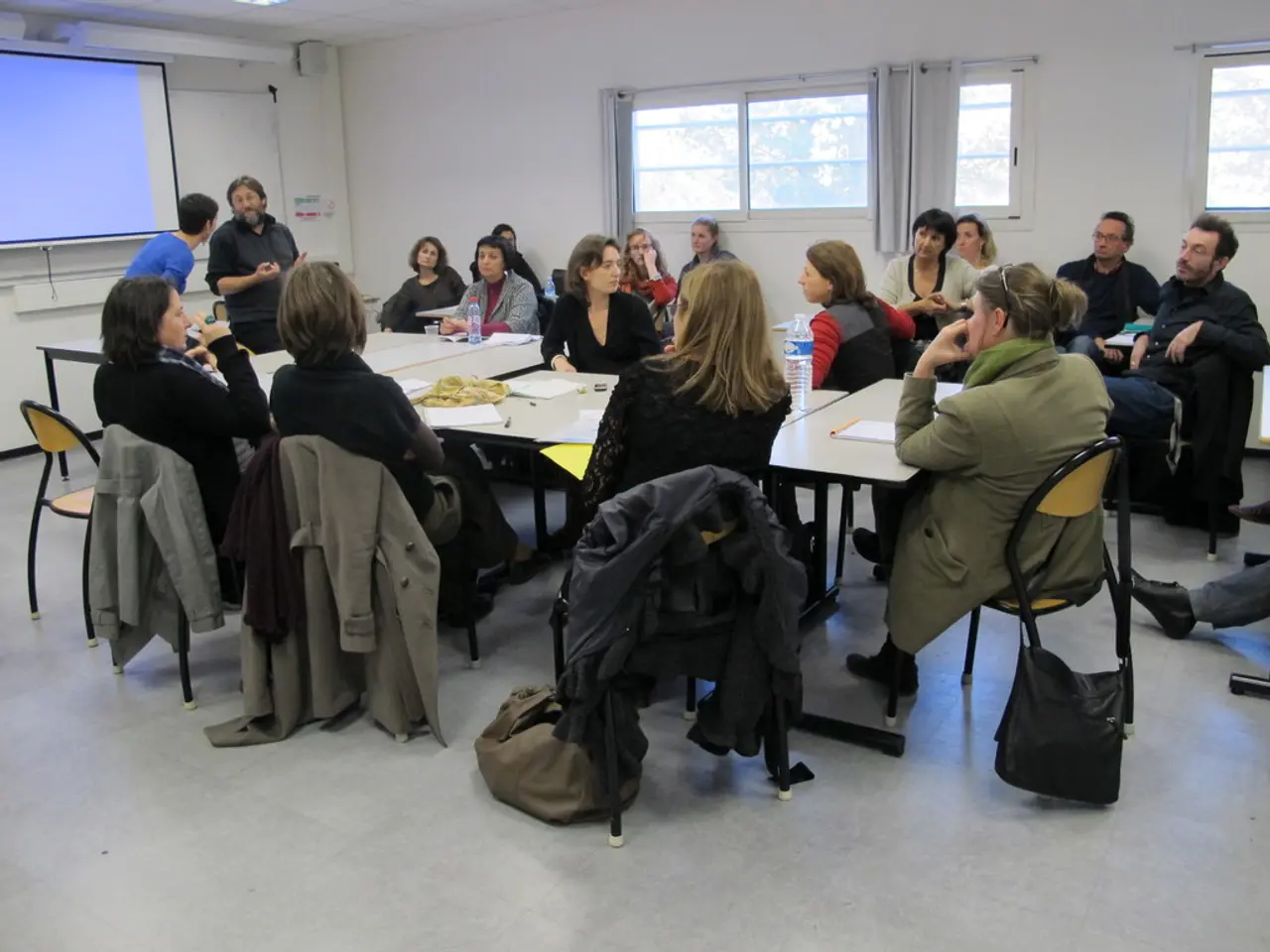Shaping Global Landscape: Exploration of the Impact of Urban Development and Groundbreaking Innovations in the Real Estate Sector
In the bustling urban landscapes of cities like London, Barcelona, Turin, Glasgow, and even across the U.S., a new wave of innovation is reshaping the commercial real estate sector. This transformation is marked by the repurposing of existing buildings, the development of central amenity districts, and the consolidation of logistics facilities.
Adaptive Reuse and Repurposing
A prime example of this trend can be seen in Houston, where a century-old Texaco building has been transformed into a vibrant multifamily community. This adaptive reuse project reflects a broader shift towards revitalising underutilised assets and aligning with urban demand shifts (Source: Eureka Business Group, 2025).
Consolidation and Modernisation of Logistics Facilities
Companies are consolidating smaller warehouses into larger, technologically advanced facilities. This move aims to improve supply chain efficiency and offer better tenant experiences, even in a cooling industrial market with rising vacancies and new supply coming online (Source: JLL, 2025). Key markets worldwide continue to secure large leases, underscoring the importance of modern distribution hubs (Source: JLL Global Real Estate Outlook, 2025).
Central Amenity Districts
Emerging as a means to add value beyond just the building, central amenity districts offer shared amenities, integrated services, and community-oriented environments that cater to diverse tenant needs. While specific examples may be limited, these districts contribute significantly to the attractiveness of commercial real estate portfolios.
Capital Deployment and Public-Private Partnerships
Despite the current administration's policies, capital is likely to be deployed in U.S. commercial real estate markets due to their stability and safety. This trend is further bolstered by an increase in public-private partnerships for these expensive developments. The appreciation of the dollar also contributes to the attractiveness of the U.S. for real estate investment.
Innovation in Industrial Real Estate
The innovation in industrial real estate is moving towards new logistics facilities with increased automation, multifunctional spaces, and a greater need for flexibility. This shift is driven by growing consumer demand for organic, environmentally friendly, and locally produced goods, a trend that is likely to amplify local production.
The Rise of U.S. Secondary Markets
Finally, there is a growing appetite for U.S. secondary markets for real estate investment. Many cities now have central amenity districts, areas devoted to the live, work, and play concept, often resulting in expensive developments with a lot of public use. These districts, along with the other trends discussed, demonstrate that commercial real estate developers are responding to ongoing economic volatility and changes in tenant requirements by focusing on quality, flexibility, and sustainability to future-proof their investments globally.
- In the revitalization of underutilized assets, the faculty of architects and urban planners play crucial roles in aligning with urban demand shifts, as seen in the adaptive reuse project of a century-old Texaco building in Houston.
- To cater to diverse tenant needs, innovation in materials and technology is essential for creating central amenity districts with shared amenities, services, and environments conducive to mental health and well-being.
- Collaborations between the health sector and commercial real estate developers can lead to the creation of facilities that prioritize tenant well-being, such as workout spaces, yoga studios, or even on-site medical services.
- Public spaces, such as parks and community gardens, can be integrated into central amenity districts, promoting a healthier, greener environment and encouraging a sense of community among tenants.
- In response to the growing demand for sports facilities, commercial real estate developers can consider repurposing existing buildings or urban landscapes to accommodate sports courts, arenas, or gyms, fostering a sense of community and promoting a healthy, active lifestyle among tenants.








